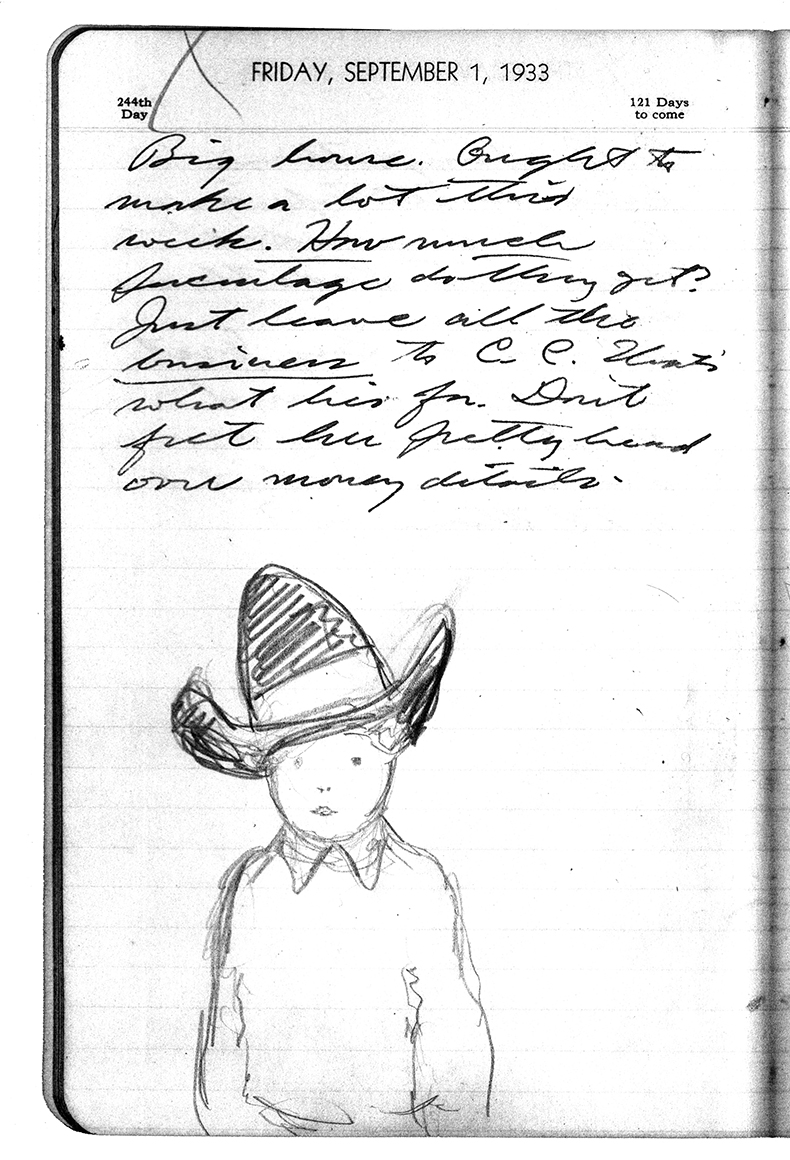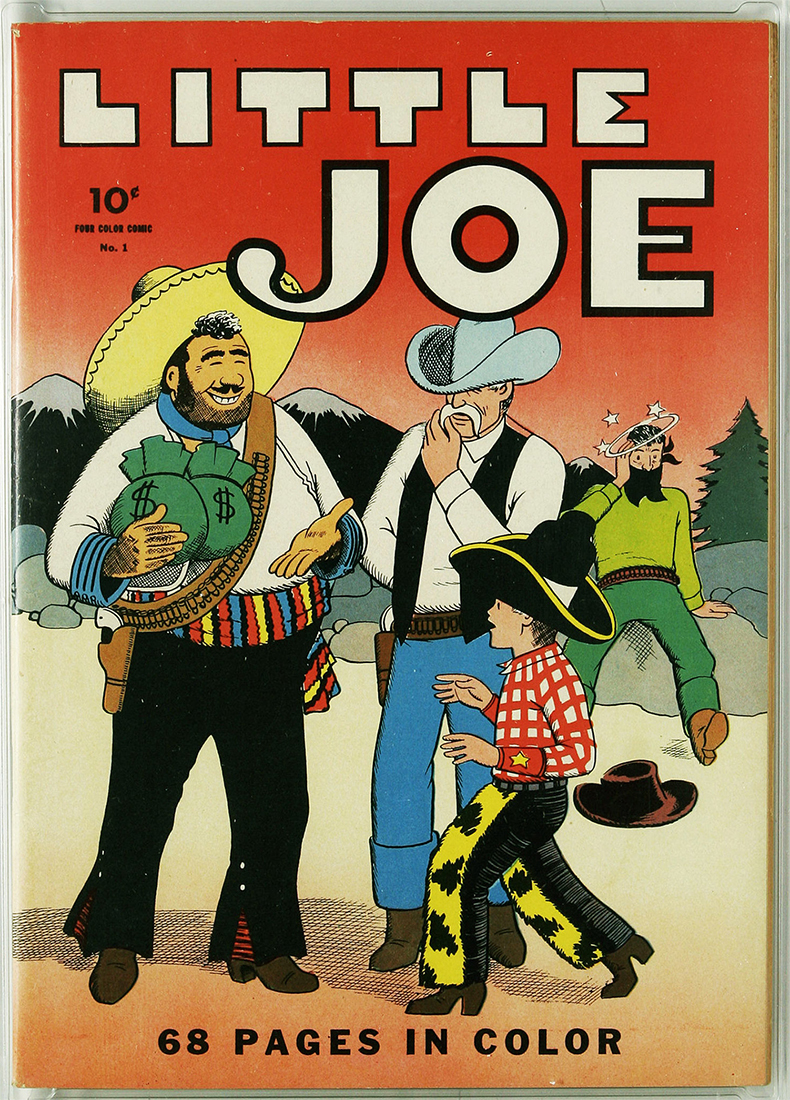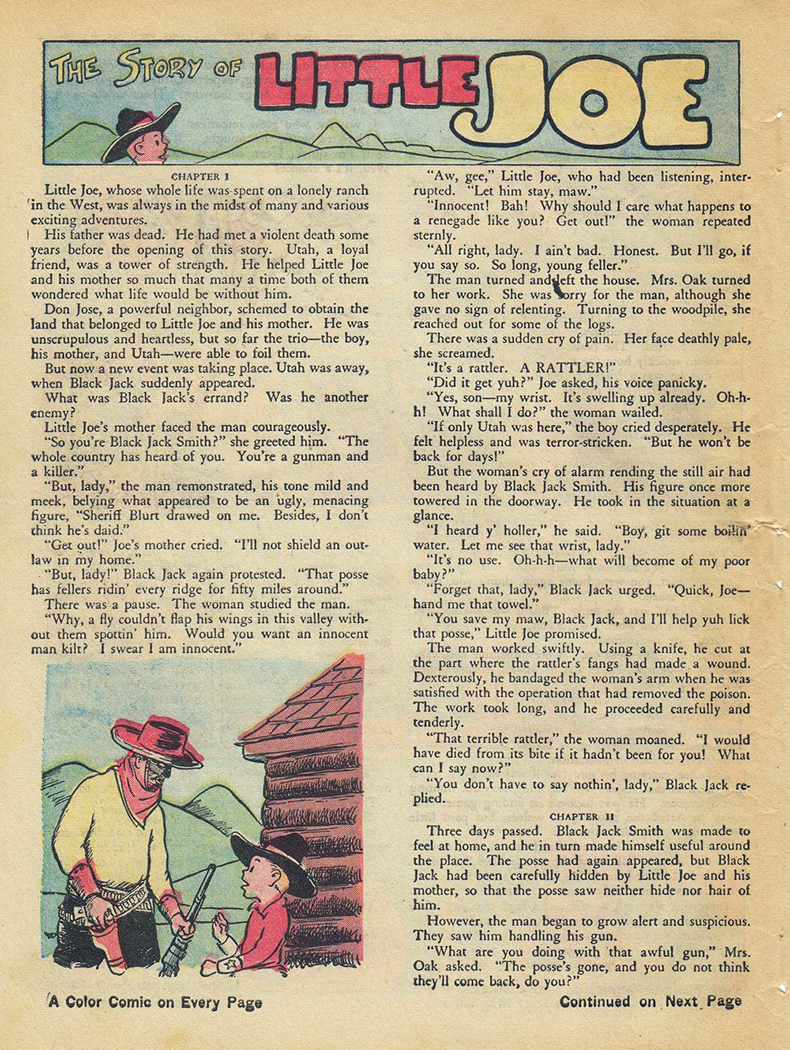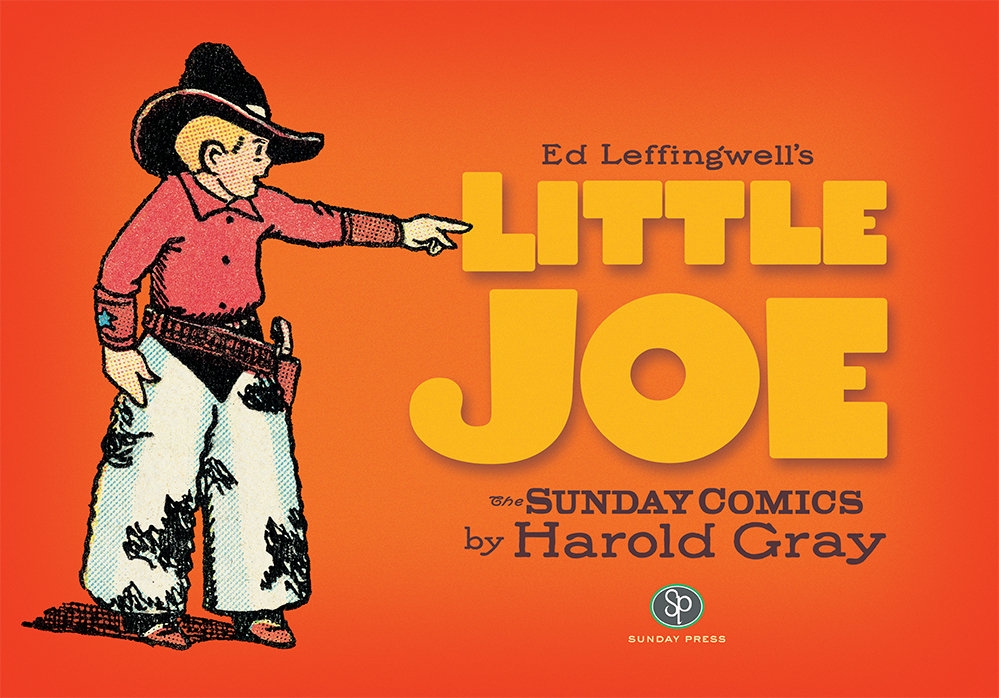




From Who's Strip Is This Anyway? The Birth and Rebirth of a Western Comic – an Introduction by Jeet Heer
Little Joe premiered in 1933 [joining] an impressive pantheon of strips that were not only beloved by Tribune readers but also enjoyed a national audience in syndication such as Gray’s Little Orphan Annie, Frank King’s Gasoline Alley, Sidney Smith’s The Gumps and Chester Gould’s Dick Tracy.
Little Joe initially carried the byline “Ed Leffingwell.” Edwin Leffingwell, who was Harold Gray’s cousin, died suddenly on October 10 1936 of a burst appendix. The strip, starting on December 13, 1936, was signed simply “Leffingwell.”. . .
But there’s every reason to believe that Little Joe was, in its initial conceptualization and in the decade after 1936 created primarily by Gray. Gray was by that point, a veteran cartoonist. Born Kankakee, Illinois in 1894, Gray studied engineering at Purdue University. After graduating, he served in the military during the First World War. After the war, he became joined the art department of the Chicago Tribune, where he had worked briefly as a reporter before his military service.
In 1924, when he was pitching the idea of Annie, Gray also tried to sell the idea of a western strip staring a young boy in 1924. When Captain Joseph Medill Patterson, co-head of the Tribune-News Syndicate went with the idea of a big-city female orphan rather than a boy in the wild west, Gray shelved Little Joe but he kept it in the back of his head for the future….
…As perhaps befitting its origins in syndication intrigue, Little Joe was a hard-bitten strip. While Edwin Leffingwell no doubt contributed his share to the work from 1933-1936, Little Joe bore all the hallmarks of a Harold Gray production: like Annie, Joe was something of a half-orphan (his father is dead, but his mother is alive) who lives in a brutal world where violence has to be met with equal force. The character Utah, a kind of adopted father to Joe, is of a piece with the many rough but fair men Gray depicted in Little Orphan Annie.
Annie was a novelistic strip that worked on a wide canvas, with the heroine travelling to big cities and small hamlets alike. Little Joe works on a narrower range, situated only in the contemporary West, giving Gray and his associates a chance to display beautiful scenes of canyons and buttes.
From A Light in the Darkness – an appreciation by Sammy Harkham
Little Joe is a charming strip on first glance and remains a charming strip on the last. That it remains so as it probes the American psyche is a tribute to Harold Gray’s talent.An overriding theme in all of Gray’s work his belief in common-sense decency. It’s a debatable notion but can be a pleasurable space to dip into as a reader. Charm is a mighty thing.
Throughout the strip Gray foregrounds the perceived differences between Mexicans, Native Americans, and Whites and then quickly dismantles their unquestioned ideas of each other, until they (or at least the reader) realize they aren't so far apart after all. When our beloved protagonists grandstand and moralize, Gray is always quick to cut them down and show their hypocrisy and ignorance. Violence, or the threat of violence, is easy to dispel amongst friends, or soon-to-be-friends if they can just hear each other out. Gray essentially presents America and its tangled web of problems as solvable misunderstandings: At the end of the day, all children are still children, and all grown men are prone to egotistical chest thumping if given a chance, regardless of their skin color. And those ornery fellas whose ignorance or meanness can’t be overcome? Well, swift hard justice is the obvious clear solution. The true villains in this strip are often men in power—politicians, sheriffs, bankers. Rampant capitalism and political malfeasance are the villains of the democratic American psyche in the late 1930, the Depression barely in the rearview mirror. Again and again, it’s greed that destroys the land and splinters communities. The various apprehensions between the Native Americans and the white people are easily overcome and sorted, but bankers and politicians? Forget it.
… The tension of the strip is often the tension of an innocent child who wants to play a fantasy cowboy in a world of real violence and corruption entirely capable of taking him under. That darkness is suggested in the title panel of each strip, each a unique and often melancholic landscape, establishing “the land” as the basis of everything to come. No matter how fast a Gray strip moves, the title panel always serves to create a subtextual sense of open space and quiet forces. Comic strips of the era are often filled with beauty, but they are also fast and usually jammed with dialogue and plot. So the title panels of Little Joe scratches the itch to see one of the cartoon greats draw the world without having to worry about moving the plot along.
From Harold Gray’s Other Orphan – Richard Marschall’s adaptation of his 1986 NEMO Magazine essay.
Little Joe is a minor classic of comic strip history whose minority status is attributable only to its current obscurity. This Sunday Press volume will correct that situation, sure as shootin’. In its prime, Little Joe was a well-drawn, powerfully written strip, evocative via both plots and art of the classic West, and strikingly hard-bitten in appeal and execution.
Little Joe was set in the Wild West indeed, although at a time contemporary to the strip’s, commencing in the 1930s. What made it “wild” was the constant cast of bad guys who crossed the path of Little Joe Oaks, his widowed mother, and an elderly but tough ranch hand, Utah. The bad guys consisted of land-grabbers, rustlers, and even Japanese invaders during World War II. Significantly, Native Americans were almost invariably good guys, and there is documented evidence that Harold Gray believed that Indians suffered many wrongs at the hands of white men.
And why mention Harold Gray when the signature on Little Joe pages invariably was “Leffingwell”? Every Sunday page, every page of this book, every line (or between every line) of this volume’s front-matter addresses that mystery, one of comic history’s great anomalies. By all available evidence, Harold Gray – one of the profession’s busiest and most successful cartoonists – created a rival strip to which he never signed his name, or even “winked” in press releases. More, he let his otherwise anonymous assistants sign the strip. First Ed Leffingwell, and then a younger Leffingwell brother, Bob. Even less routine was the permanent near-anonymity of the Leffingwells: scant promotion; few public appearances; in fact, footprints so scarce that seasoned cowboys riding hours for a lost calf would sympathize with contemporary historians.
The artwork in the 1930s and 1940s was very impressive; it was detailed and frequently panoramic, making equal use of careful crosshatching and vivid colors. At the same time Harold Gray was lavishing such documentary attention to the depiction of cityscapes and cities’ own personalities, usually, in his major strip. The styles reflect Gray’s creative talents and his catholic tastes, but also reflect his annual motor drives across America with notebook and sketchpad. It was the land, and the people, of all parts of America.

